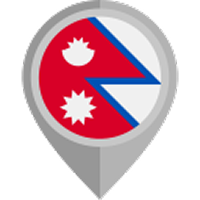Nepal vision | 20/03/2025
Pikey Peak Trek is among the exciting adventure in the heart of the Himalayas, away from the crowds immersing in the beauty of the Everest region. The unexplored gem is in the lower Everest region, an ideal alternative with the panoramic views of Dhaulagiri, Everest, Makalu, Kanchenjunga, AmaDamlam, Lhotse, Nupatse, Numbur, Gaurisankhar, Langtang.
Walking through the pristine and appealing future of the Sherpa community alongside the natural charm of the Khumbu region, the exotic monasteries, and the wildlife, everything will make your experience of the remote area of Nepal in the purest form.
Many of you might not know this, but Sir Edmud Hillay himself claims the place has the best panoramic views of Everest. The easily accessible PIkey Peak Trek is perfect for the family and friends adventure, so if you are ready to understand more about the off-the-beaten-path adventure with world-class mountain views, stay till the end to know all about the Pikey Peak trek.
Overview of the Pikey Peak Trek
Pikey Peak Trek is an appealing adventure in the lower region of Everest for those who are looking to tackle the crowd and immerse in the beauty of the Everest region. The name "Pikey" comes from a local Sherpa Clan deity representing the sky over nature. The summit at 4067m is the place where you get the best scenic views of the Everest region.
Kick off your journey with a pleasant drive from Kathmandu Valley in the country of Dhap Bazar, crossing all those beautiful rhododendron forests. Now starts your day of trekking with the walk to Jhapre with the stunning views of Everest and Numbur with an appealing hike to Pikey Base Camp. The places where you get to enjoy the local cheese production in the cheese factory. The next day is your climax journey to Pikey Peak, the place where you get the best views of the surrounding Everest and another peak.
Throughout your journey, you pass through flapping chorten, spinning prayer wheels, and different monasteries scattered along the region. One of them is Thupten Choling Gompa, one of the most important to explore and immerse in the culture and customs of the Sherpa community. Further hiking to Phaplu will be done by crossing the suspension bridge and following the Junbesi River.
and different monasteries scattered along the region. One of them is Thupten Choling Gompa, one of the most important to explore and immerse in the culture and customs of the Sherpa community. Further hiking to Phaplu will be done by crossing the suspension bridge and following the Junbesi River.
Throughout your journey, you will encounter several things that are also the highlight of the Pikey Peak Trek.
- Take in stunning views of Mt. Everest, Lhotse, Ama Dablam, Kanchenjunga, and more. Every step offers a new, awe-inspiring perspective of the Himalayas.
- Explore the newly opened Pikey Peak Trek, a quiet, less crowded path through the lower Everest region, perfect for those seeking a peaceful escape.
- Enjoy a shorter trek that still offers all the beauty and adventure of the Everest region without the long commitment.
- Stop by the yak cheese factory at Pikey Peak Base Camp for a unique cultural experience.
- Experience the magic of sunrise and sunset with sweeping views of the tallest mountains in the world from Pikey Peak.
- Sherpa Culture: Immerse yourself in local life with a visit to the Thupten Choling Monastery in Junbesi, where you can learn about Sherpa traditions and Buddhist spirituality.
How Difficult is the Pikey Peak Trek?
Pikey Peak Trek is quite an adventure, but many trekkers have the concern of how difficult it is. The good news is this is a moderately complex level with a less strenuous trek in the Everest region. Some factors can influence the difficulty factors, so let us find out what these are for a greater insight into the Pikey Peak Trek.
Trekking Distance and Daily Walking Hours
You will be walking around 7 hours, covering 10-15 km daily in that rugged landscape. While this may sound manageable, trust us, it is the reason for your physical exhaustion. Likewise, there are some steady climbs, so it's essential to be prepared for a bit of strain over longer stretches. However, the pace is comfortable for most trekkers and manageable with proper rest.
Altitude and Acclimatization Concerns
One of the main concerns for any trek in the Everest region is the altitude. The trek takes you to an altitude of 4000m, and at such an altitude, the oxygen level is less. In this situation, altitude sickness is likely to happen. Headache, vomiting, nausea, dizziness, and shortness of breath are the initial symptoms that must be managed with proper hydration and a slow pace. If it is not managed, then it is recommended that you take Diamox.
The best way to prevent the situation is to acclimatize properly. Moreover, the gradual ascent over several days is a big advantage, as it allows your body to adjust to the increasing elevation. You will have plenty of time to acclimatize at various points during the trek to prevent the chances of altitude sickness.
Trail Conditions and Terrain
The trail conditions are relatively easy to navigate thanks to the well-maintained paths that are not too technical. The journey includes a variety of terrain: dirt paths, forested trails, and some rocky sections. While parts of the trail can be steep and challenging, the terrain is manageable primarily for trekkers with a basic level of fitness. Along the way, you'll cross suspension bridges, pass through Sherpa villages, and be surrounded by beautiful, lush forests, which add to the charm of the journey.
How to Prepare for the Pikey Peak Trek
To have a great adventure in the lap of Pikey Peak Trek, all you need is proper preparation that includes the right gear, taking out travel insurance, and ensuring you’re physically and mentally fit for the journey. So, let us get right into it.
Physical Fitness
You will be walking in the rugged terrain, igniting the physical challenge, so you need good physical fitness. The first thing you should do is build endurance and strength by involving both cardiovascular training and leg strength exercises.
Start by taking long hikes on hilly terrain or stair climbing. If possible, go for weekend hikes to simulate the trek. Later, you should focus on strengthening your legs and core muscles. Squats, lunges, step-ups, and calf raises are practical exercises for this.
Pre-Trek Workout Routine
Include this basic pre-trek workout to get you ready:
- Cardio: To build stamina, aim for at least 3-4 cardio sessions per week, such as running, cycling, or swimming.
- Leg Strength: Include strength training 2-3 times a week with exercises like squats, lunges, and leg presses.
- Stamina-Building Exercises: Include longer hikes or walks with a loaded backpack to simulate the trek conditions.

Mental Fitness
The trek in such a remote region is a bit unpredictable, so mental preparation is just as necessary.
Be ready for sudden changes in weather, trail conditions, and possible delays. Practice staying calm and flexible when things don’t go as planned.
It’s normal to feel tired or overwhelmed at times but remember that the trek is about the experience, not speed. Celebrate small milestones along the way.
Gear
- Clothing: Base layer (top and bottom), mid layer (fleece or down jacket), Outer layer (waterproof jacket and pants), Insulated jacket, Gloves (warm and lightweight), Hat and neck gaiter, Socks (thermal and moisture-wicking), Gaiters, Sunglasses.
- Climbing Gear: Ice axe, Crampons, Climbing boots (technical), Helmet, Harness, Carabiners, Ropes, Slings and webbing, Ice screws, Snow stakes, Repair kit (for gear), Avalanche beacon (if needed).
- Camping Gear: Tent (4-season), Sleeping bag (cold weather), Sleeping pad, Stove and fuel, Cooking pots and utensils, Water bottles/hydration system, Food and snacks, Waterproof stuff sacks.
- Personal Items: Passport and permits, Trekking poles, Headlamp, Camera and batteries, Personal hygiene items, First aid kit, Trekking shoes, Maps and compass.
Travel Insurance
Travel insurance is a must when trekking in Nepal to protect you against unexpected situations like medical emergencies, accidents, or flight delays. Since the trek takes you to higher altitudes, it's essential to have coverage for emergency evacuation in case of altitude sickness or injury. Good travel insurance should also cover trip cancellations, lost baggage, and delays, which are common in remote trekking regions. Look for a policy that explicitly covers trekking at high altitudes (up to or beyond 4,000 meters) and includes emergency medical services.
To wrap up, The Pikey Peak Trek offers a perfect mix of breathtaking Himalayan views, cultural exploration, and moderate challenge. With stunning vistas of Mount Everest, Lhotse, and other towering peaks, along with visits to charming Sherpa villages and monasteries, this trek is both rewarding and accessible for trekkers of all levels. Its manageable difficulty makes it ideal for those looking for an adventure that isn’t as crowded as other Everest treks.
Ready to explore the beauty of the Everest region? Nepal Vision Trek is here to help you plan your perfect Pikey Peak Trek. Contact us today for expert guidance and a memorable journey.
FAQS









